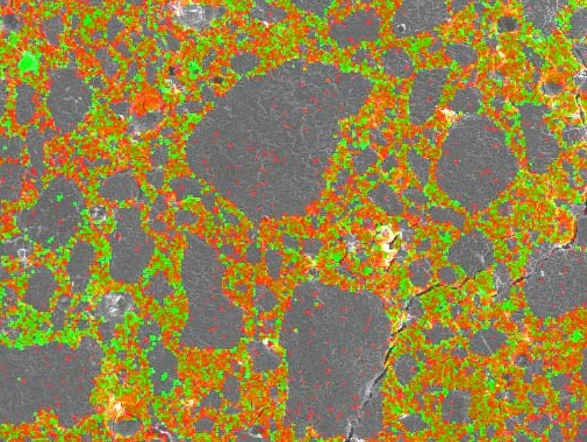A.R. Sakulich1, Ž. Ivošević2 and M.W. Barsoum3
- Department of Materials Science and Engineering, Drexel University, Philadelphia PA 19104 USA, A.Sakulich@gmail.com
- College of Engineering, University of Novi Sad, Novi Sad, Serbia ivoseviczeljko@yahoo.com
- Distinguished Professor, Department of Materials Science and Engineering, Drexel University, Philadelphia PA 19104 USA, barsoumw@drexel.edu
ABSTRACT
This study was inspired by recent findings that some of the blocks in the pyramids of Egypt are synthetic made by combining diatomaceous earth, DE, with limestone aggregate and activated by lime. As a feasibility study this work reports on the development of a NaOH-activated masonry material in which the Si in the cementing phase comes D . Initial attempts at a NaOH/DE based material using sand as an aggregate achieved strengths of 45 MPa, but were soluble in water. After curing at 90 °C for 6 – 48 h, formulae containing small quantities of metakaolin and quicklime achieved compressive strengths on the order of 20±5 MPa; curing at 90 °C for a week increased the average strength of one of the formulae to 35 MPa, suggesting that the strengths of all formulae will increase with time. The slight alteration of the formulae by adding metakaolin and/or quicklime lowered the compressive strengths, but dramatically enhanced the water solubility resistance of this mortar when compared to compositions that did not contain them. Xray diffraction spectra of the various cement pastes were featureless, indicating that the cementing phase is fully amorphous. The absence of C-S-H suggests that the cementing phase that forms here is unlike that formed in ordinary Portland cement.
KEYWORDS: Alkali-Activation, Diatomaceous Earth, mortar, Pyramids
A4-2



